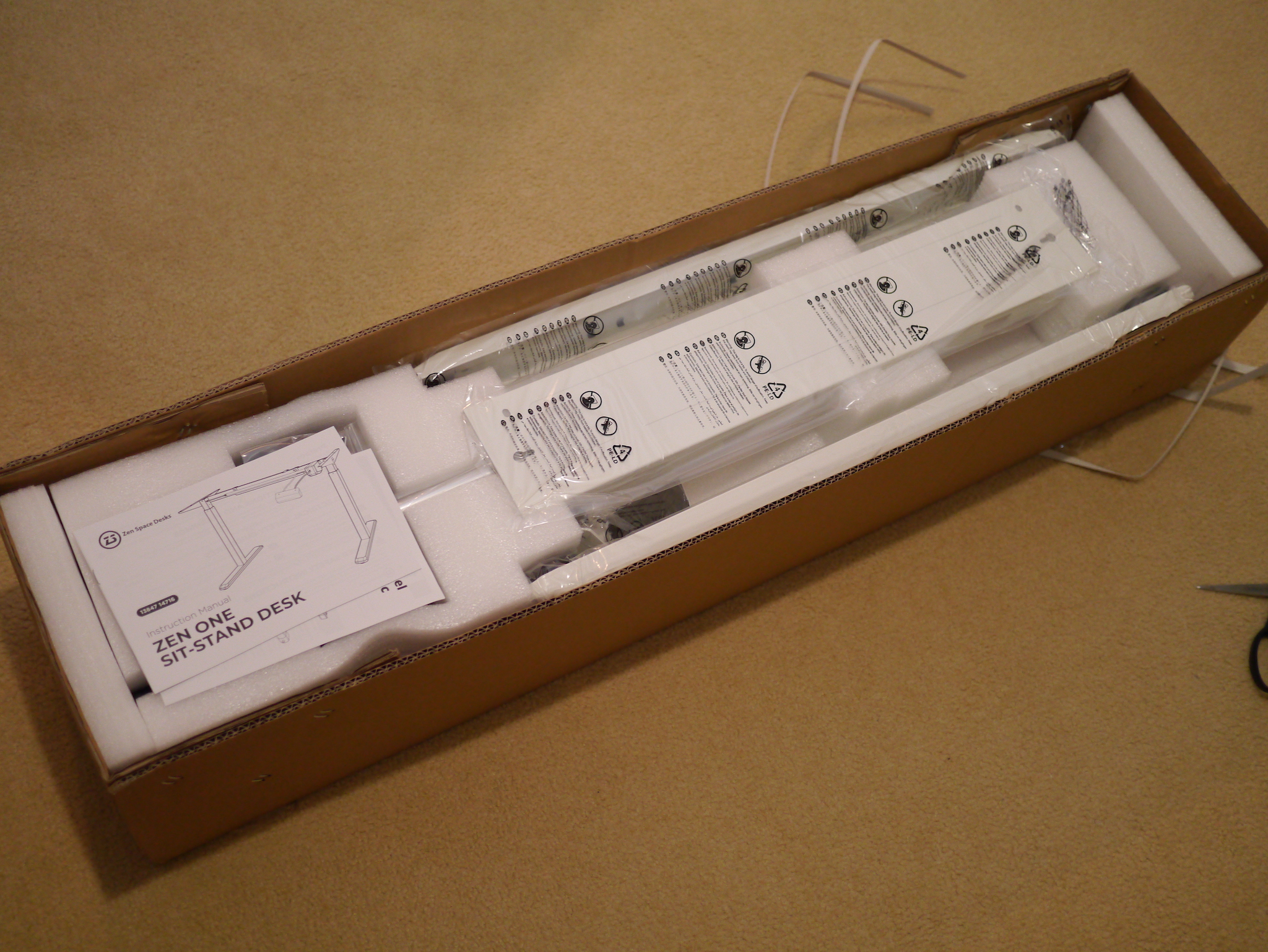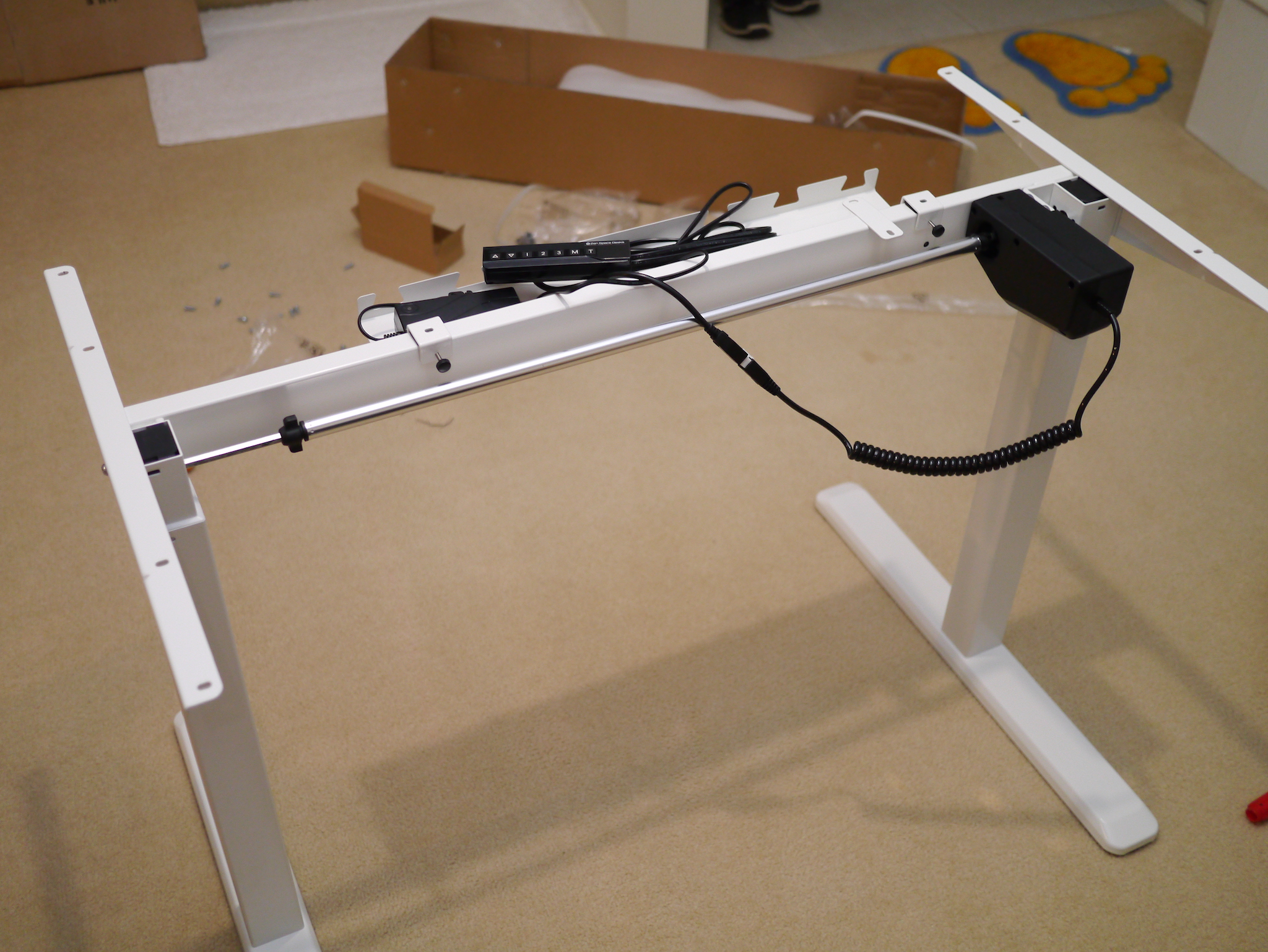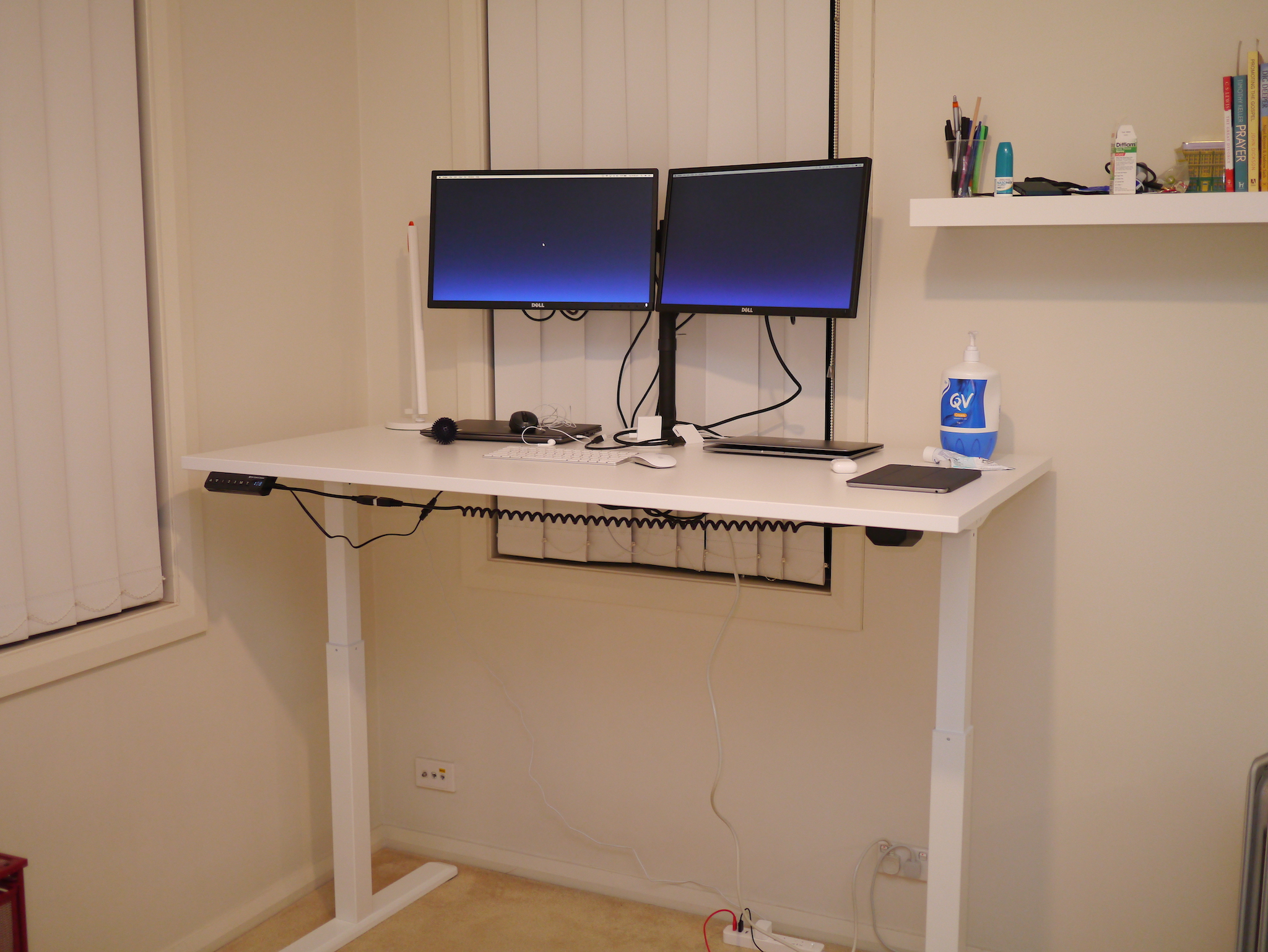Zen One standing desk review
I’ve liked the idea of standing desks ever since I heard of their existence, which is probably when Marco Arment shared an old photo of his makeshift standing desk. Back when I worked in an office with standing desks, I sought those desks out, and used them in standing mode, for perhaps a fifth of the day. Unfortunately, though the office I’m based at now has electronic height adjustable desks, they peak at around 90 cm, which is far too low to use as a standing desk.
Since I’ve been working from home the past couple of months, saving money on public transport, and getting increasingly fidgety trapped in my room for the vast majority of my days sleeping and working, it gave me an excuse to revisit the possibility of owning a standing desk myself.
According to Wirecutter, Fully produces among the best standing desks for the money, unlike Ikea, whose Bekant electronic standing desk is universally rated as trash even on their own site.
Unfortunately Fully doesn’t ship to Australia, but I stumbled across Zen Space Desks, a Brisbane-based company that seemed to have solid reviews on their own site and a few positive remarks on Whirlpool. They were offering $150 off their entry level $600 AUD Zen One desk (150×75 cm desktop) due to desks being backordered for over a month, so I bit the bullet.
It came in two really large, surprisingly heavy boxes, which took me an evening to set up.




- The desktop came pre-drilled with metal inserts for the frame, which seems obvious to me, but apparently was something Zen Space Desks didn’t used to do before June this year.
- All the screws except for the ones attaching the remote to the desktop used an included hex/Allen key, which I like better than using a screwdriver. One of the screws arrived damaged, so a new one is getting mailed out.
- The Zen One comes with a cable management tray, which is a great addition since it avoids having to drill more holes into the desktop. Interestingly, the Zen Professional desk does not come with one, instead recommending an optional cable management channel. I found the tray too shallow for my liking which limited which cables I could plug into the power board that I tucked there.
- The Zen One controller comes with 3 memory settings (I really only need 2), which was a deciding factor in me pulling the trigger on this desk, since being able to mindlessly switch between sitting and standing makes a huge difference in its functionality, and is not provided in many desks of its price range.
- The controller has a very long, curly cable that attaches to the motor on the right leg, which is quite ugly when you run it all the way to the left. I think I would have preferred a thinner, inelastic cable that could mostly be hidden in the cable management tray, but I’m sure it looks fine if I were to keep the controller on the right.
- The Zen One comes with a 3 year warranty, unlike the Zen Professional which comes with a 10 year warranty. It was a tough call to not pay the extra $275 for assurance of longevity, and time will tell if I come to regret this.
- The desk is a bit unwobbly at my standing desk height (108 cm), though it didn’t bother me (see video below). At its max height of 123 cm, this would be a problem, though I’m not sure how tall one would have to be to experience it.
The most significant issue with this desk, and a dealbreaker for many, is that the minimum height is too high. 73 cm is the lowest setting on the controller, which is really 73.5 cm + 2.5 cm tabletop. Zen Space Desks doesn’t recommend people under 170 cm in height use the table, though even at 177 cm, I’ve had to increase my chair height to its maximum height to compensate (which admittedly isn’t a lot). My previous desk (from Ikea) used 70 cm legs and a 3 cm tabletop, which felt perfect (which means the minimum should be lower than that). Interestingly, the Jarvis Fully mid range frame also goes from 73.6 cm to 122.5 cm (without top), so it seems to be a systemic problem for 2 stage desks which needs to be addressed, perhaps by reducing the upper limit of the table height.
(Stages refer to how many telescoping levels there are within the desk legs. It appears budget desks like the Zen One and Jarvis Fully mid range have 2 stages, and more premium desks like the Zen Professional and Jarvis Fully extended range have 3 stages, along with greater weight capacity.)
If I were any shorter, I’d be regretting my purchase. The Uplift V2 has a much more reasonable lower bound (61.7-126.7 cm), as does the Jarvis Fully extended (62.2-127 cm) and Zen Professional (60-125 cm). I’m surprised this isn’t an issue raised by more people.
Update: apparently “standard desk heights are too high for 95% of our population”. I guess I’ve never noticed before.
